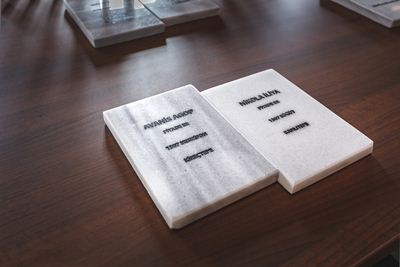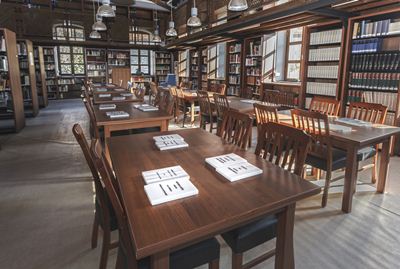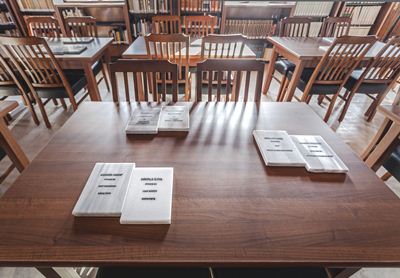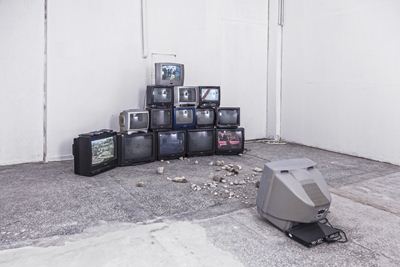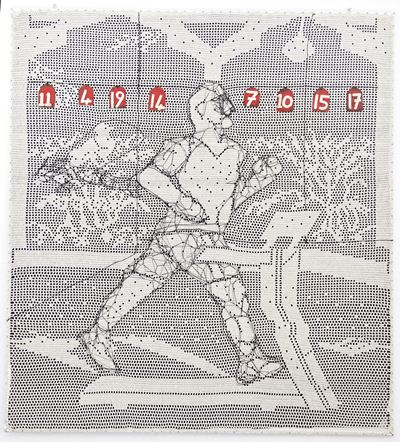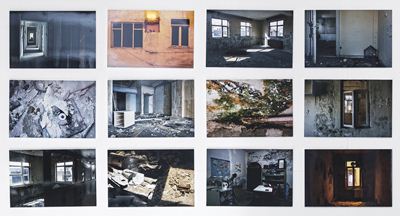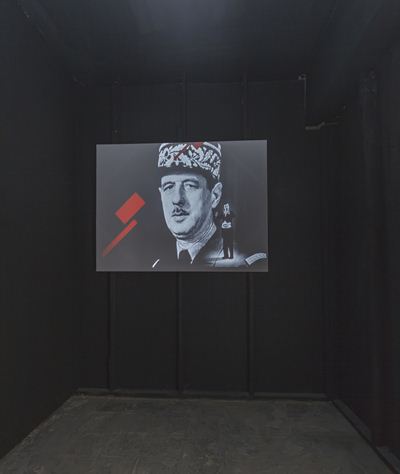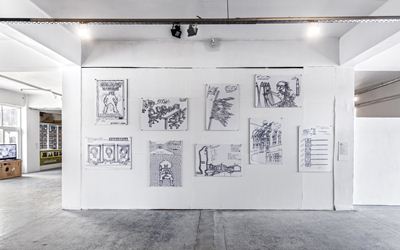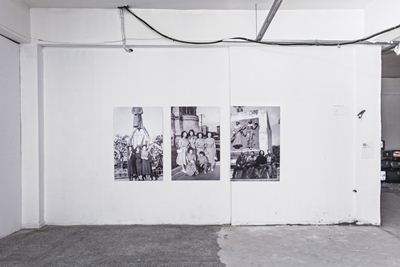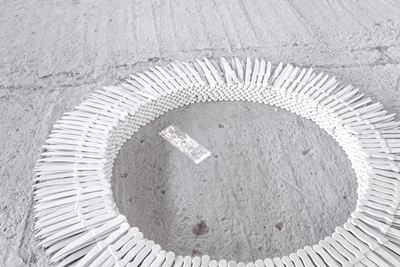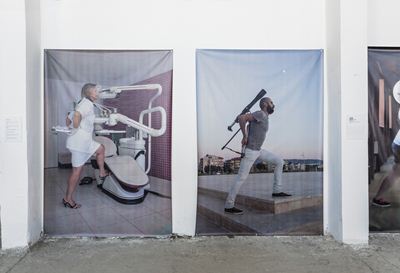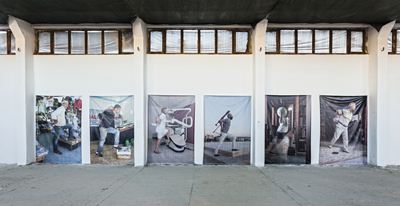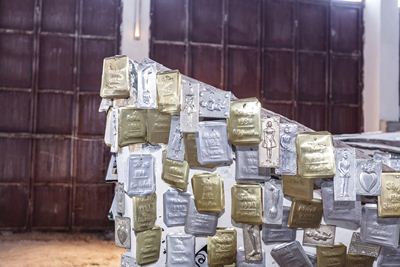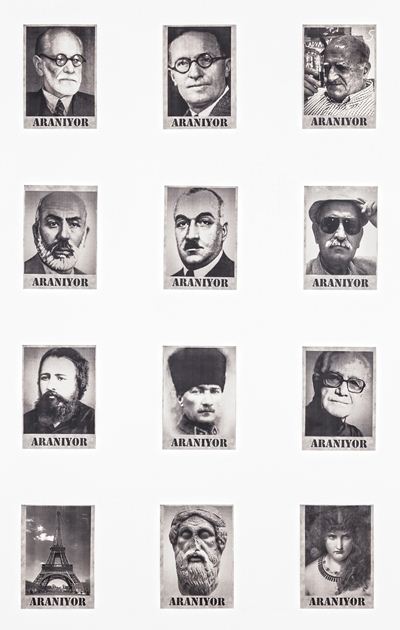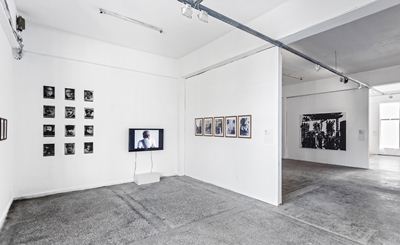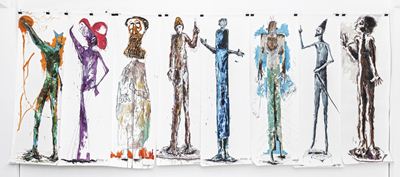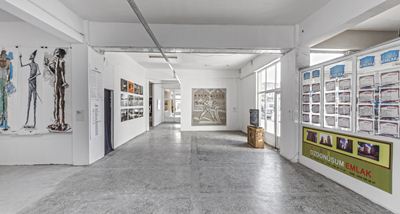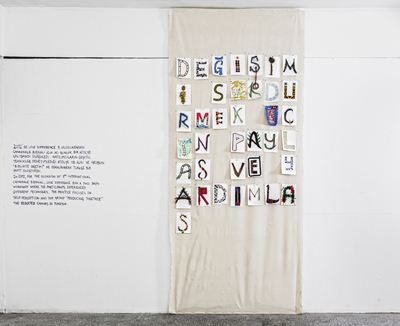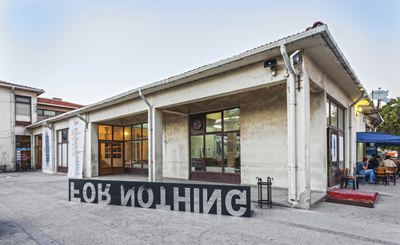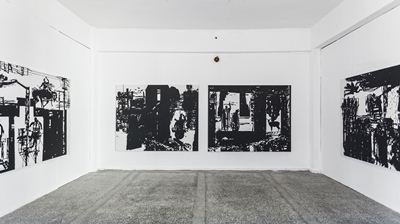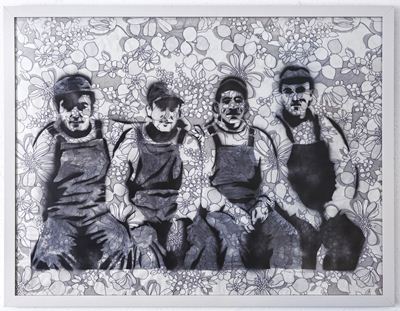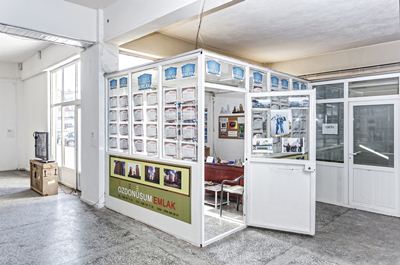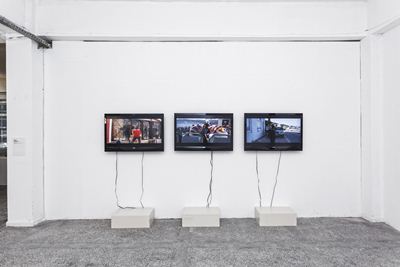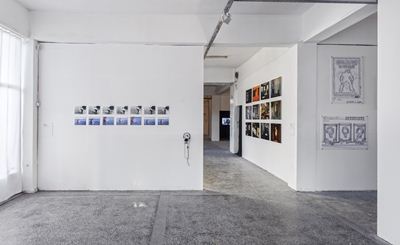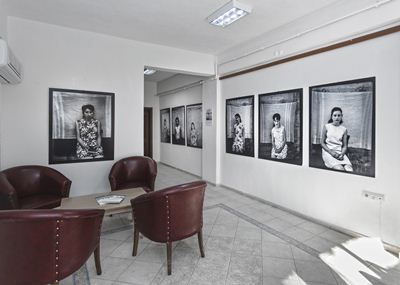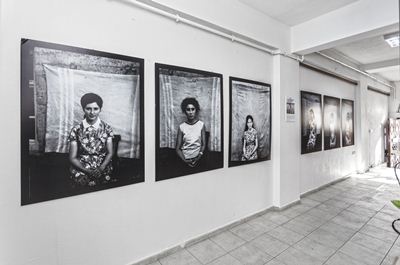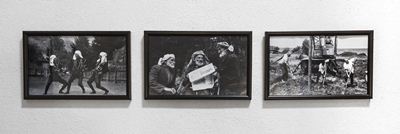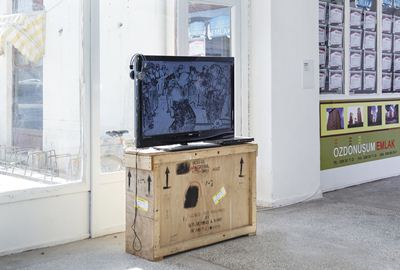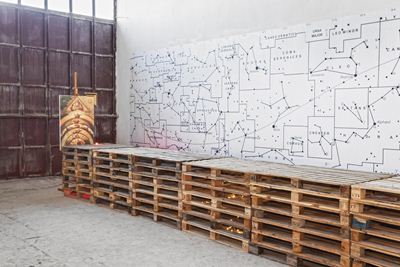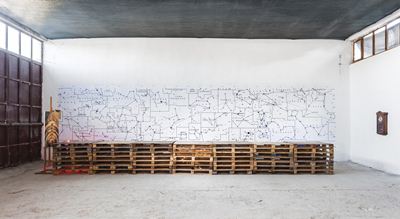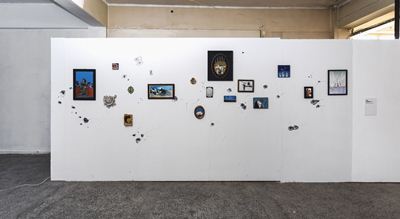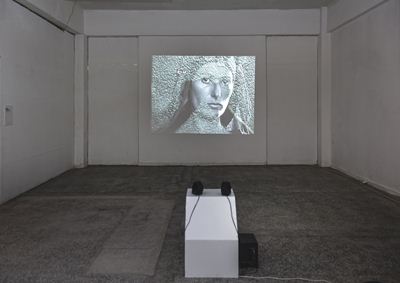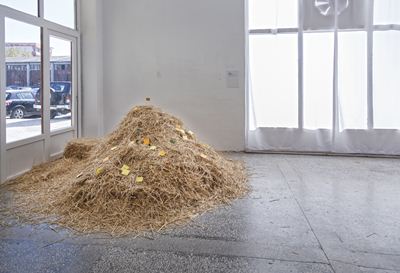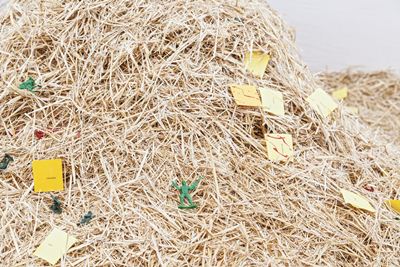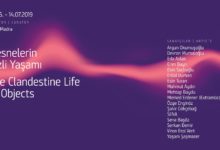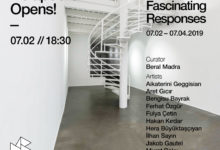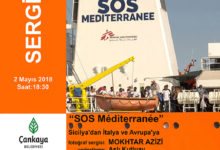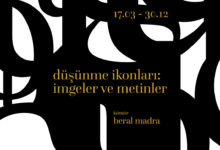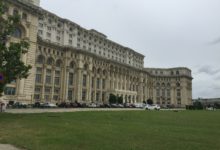PRESS RELEASE
3RD INTERNATIONAL CANAKKALE BIENNIAL
FICTIONS AND DISSENTIONS*
SEPTEMBER 28TH – NOVEMBER 3RD 2012
3rd International Canakkale Biennial is supported by the Municipality of Canakkale. Sponsors also include Instituto Italiano di Cultura and Goethe Institut.
Housed in the east coast of the Dardanelles strait and praised for its crossroad quality between continents and seas Canakkale’s 3rd International Biennial brings art works with fictions and dissentions that question, probe and criticize the current political, economic and social condition to the public opinion and evaluation.
International interaction embraced by the social and cultural structure of this city, which has always been a historic and contemporary threshold between Mediterranean and Anatolian cultures, as well as the close attention shown and cooperation provided by the residents and local authorities provide the sustainability of the biennial. Being an international cultural initiative the Biennial is gaining in importance for the rooted academia in the city.
3rd International Canakkale Biennial chooses to be the production, consumption and perception domain for contemporary art. It aims at pin pointing the globally reshaped maps, the neo-liberal economy struggling to reform itself, the political transformations especially in the Middle East, the political power pressures gradually becoming a non-geographical concept, and highlighting all the concrete evidences of these facts in our daily lives. The Biennial either offers the present state of events or proposes a new scene through artworks gathered around a certain theme. Partially, it inquires the present state of organization, which has materialized and been reactivated via the recent wave of uprising.
The 3rd International Canakkale Biennial puts the city on the agenda of international artists, who adopt the conceptual framework of the biennial and offer these artists many interesting and functional venues to display the works they will be producing especially for the biennial. In order to create an interactive environment for all parties, culture and art institutions, and scholars are encouraged along with the public to collaborate with artists in workshops, open sessions, performances and conferences to maintain an encompassing analysis and interpretation of the biennial’s conceptual scope. The Biennial placing Canakkale within global culture and art industry and their communication networks show that the final purpose is not organizing a biennial but holding a sustainable activity, which encourages the viewers to participate in the production processes and transform the organization into a cultural interface for the Mediterranean region.
The Conceptual Framework and Title of the 3rd International Canakkale Biennial is inspired by Jacques Ranciére: “Art does not produce knowledge and submissions for politics. It produces dissent, fictionalities, and the reciprocal interdependence of different kinds of sequences in the realm of sensibility. These it produces, not for political action, but in the framework of its own politics, in accordance with that peculiar double action, which on one hand encourages itself for self-destruction and on the other locks itself in loneliness. Art produces fictionalities and dissents which reorganize the space-time of can pages, museums, films and theatre which are in fact forms that demand divisions and subdivisions of general locations of sensibility, alone and together and the interrelations between vision and reality. In this way, art produces-creates forms that provide recreations of experiences- It is indeed the area, in which forms of political subject-agent to come into existence”.
Jacques Ranciére, Die Aufteilung des Sinnlichen (Die Politik der Kunst und Ihre Paradoxen), Polypen, 2008, p.89-90
ARTISTS
YEŞİM AĞAOĞLU (TR), MURAT AKAGÜNDÜZ (TR), NIKITA ALEXEEEV(RU), MELIH APA (TR), ARTIK İSLER VIDEO KOLEKTIF (TR), FIKRET ATAY (TR), BOBBIE (TR-DK), MEHMET ALI BORAN(TR), BRACO DIMITRIYEVICH (BH), BARIŞ EVİZ (TR), JAKOB GAUTEL (FR), NADI GÜLER (TR), İNSEL İNAL (TR), HAKAN KIRDAR (TR), SERHAT KİRAZ (TR), KOMET (TR), KALLIOPI LEMOS (GR-UK), LOVE DİFFERENCE & ARTWAY OF THİNKİNG (IT), MOATAZ NASR(EG), MUSTAFA OKAN (TR), ALİ İBRAHİM ÖCAL (TR), FERHAT ÖZGÜR(TR), NERIMAN POLAT (TR), ULRIKE ROSENBACH (DE), ÇAGRI SARAY (TR), MARWAN SAHMARANI (LB), ANİ SETYAN (TR), JULIAN STALLABRASS (UK), AYHAN TASKIRAN (TR), SEVIL TUNABOYLU (TR), YENI ANIT (TR), SENCER VARDARMAN(TR), NALAN YIRTMAÇ (TR), PINAR YOLAÇAN (TR)
MAIN TEAM
Artistic Director: Beral Madra
Curator: Firat Arapoglu
Director-Curator: Seyhan Boztepe
Coordinator-Curator: Deniz Erbas
Coordinators: İsmail Erten, Ezgi Arıduru, Oral Kaya
PARALEL EVENTS
Curator: Fatih Balci
Biennial Child: Erdinc Alniak
Biennial Young: Eren Uysal, Birim Erol, Oguz Balci
Biennial Disability-Accesibility-Inclusion: Cemal Oney, Didem Gurdogan
VENUES
Old bus station and warehouse, Korfmann Library, Armenian Church, City Cultural Centre, public spaces
www.canakkalebienali.org
For more information please contact Deniz Erbas through deniz.erbas@gmail.com or Ezgi Ariduru through eariduru@gmail.com
BASIN BÜLTENİ
3. ULUSLARARASI ÇANAKKALE ÇAĞDAŞ SANAT BİENALİ
“KURGULAR VE KARŞI DURUŞLAR”
28 EYLÜL- 3 KASIM 2012
Açılış: 28 Eylül 2012 saat 17.00
SANATÇILAR:
YEŞİM AĞAOĞLU (TR), MURAT AYEŞİM AĞAOĞLU (TR), MURAT AKAGÜNDÜZ (TR), NIKITA ALEXEEEV(RU), MELIH APA (TR), ARTIK İSLER VIDEO KOLEKTIF (TR), FIKRET ATAY (TR), BOBBIE (TR-DK), MEHMET ALI BORAN(TR), BRACO DIMITRIYEVICH (BH), BARIŞ EVİZ (TR), JAKOB GAUTEL (FR), NADI GÜLER (TR), İNSEL İNAL (TR), HAKAN KIRDAR (TR), SERHAT KİRAZ (TR), KOMET (TR), KALLIOPI LEMOS (GR-UK), LOVE DİFFERENCE & ARTWAY OF THİNKİNG (IT), MOATAZ NASR(EG), MUSTAFA OKAN (TR), ALİ İBRAHİM ÖCAL (TR), FERHAT ÖZGÜR(TR), NERIMAN POLAT (TR), ULRIKE ROSENBACH (DE), ÇAGRI SARAY (TR), MARWAN SAHMARANI (LB), ANİ SETYAN (TR), JULIAN STALLABRASS (UK), AYHAN TASKIRAN (TR), SEVIL TUNABOYLU (TR), YENI ANIT (TR), SENCER VARDARMAN(TR), NALAN YIRTMAÇ (TR), PINAR YOLAÇAN (TR)
BİENAL EKİBİ:
Beral Madra (Genel Sanat Yönetmeni)
Fırat Arapoğlu (Küratör)
Seyhan Boztepe (Küratör ve Bienal Direktörü)
Deniz Erbaş (Koordinatör Küratör)
3. Uluslararası Çanakkale Bienali, günümüzün siyasal, ekonomik ve toplumsal gerçeklerini sorgulayan, irdeleyen, eleştiren kurgular ve karşı duruşlar içeren sanat yapıtlarını Çanakkale’de sergiliyor. Küratör ekibi, Mısır’dan Fransa’ya, Rusya’dan İngiltere’ye farklı coğrafyalardan önde gelen sanatçıları, Adana’dan Ankara’ya, İstanbul’dan Mardin’e uzanan Türkiye coğrafyasından farklı kuşaklardan sanatçıları bu sanat etkinliğine davet etti. Sanatçılar kurgular ve karşı duruşlar teması etrafında, Çanakkale’nin özgün konumu, tarihi ve kültürel zenginlikleri ve toplumsal dokusundan beslenen özgün projeler geliştirdiler.
3. Uluslararası Çanakkale Bienali, kamusal alanlarda sanat ve kültür kurumları ile üniversiteleri sanatçılarla işbirliğine davet ederek kenti küresel kültür-sanat sanayi ve iletişim ağları içine konumlandırmayı da başardı. Akdeniz ile Anadolu kültürleri arasında tarihsel ve güncel bir eşik oluşturan bu kentin günümüze özgü toplumsal, kültürel yapısının uluslararası etkileşime açık özelliği, kent yönetimi ve halkının gösterdiği ilgi ve işbirliği bu bienalin hayata geçmesini sağlayan itici gücü oluşturdu. Bienal, kentin gelişmiş üniversite ve akademik altyapısı için de bir uluslararası kültürel açılım etkinliği olarak önem taşıyor.
Bienalin ana mekanları, şehrin merkezinde yer alan Eski Otogar Binası ve Deposu olacak. Paralel etkinlikler ve mekana özel sanatçı projeleri ise Korfmann Kütüphanesi, Ermeni Kilisesi ve Devlet Güzel Sanatlar Galerisi’nin yanı sıra beklenmedik kamusal alanlarda ve mecralarda izlenebilecek. Bienal Paralel etkinlikleri kapsamında hayata geçirilecek ve Mustafa Horasan, Halil Turhanlı gibi isimlerin katılacağı atölye, açık oturum ve konferanslarla Bienal’in kavramsal çerçevesinin geniş ölçekli bir düşünme ve tartışma düzlemine taşınması sağlanacak. Bienal Genç, Bienal Çocuk ve Bienal Engelsiz, etkinliğin farklı kesimlerle daha etkin buluşması yönünde yaratıcı ve yenilikçi projelerini hayata geçirecek.
3. Uluslararası Çanakkale Bienali günümüzde gerçekleşen sanatın üretim için izlenme ve algılanma alanı olmayı amaçlıyor. Küresel ölçekte yeniden çizilen coğrafyaları, tekrar bedenleşmeye çalışan neo-liberal ekonomiyi, özellikle Ortadoğu’da gözlemlenen politik dönüşümleri ve bunların gündelik yaşama bulaşan durumlarını görünür kılarken belirli bir kavram üzerinden bir araya gelen işlerle ya var olan durumun bir manzarasını sunmayı ya da yeni bir manzaranın önericisi oluyor. Biraz da, yeni isyan dalgaları ile cisimleşen ve tekrar canlanan bu örgütlenme durumunu masaya yatırmayı deniyor.
İtalyan Kültür Merkezi, Goethe Enstitüsü ile yerel ve ulusal kurumların desteğini arkasına alan 3. Uluslararası Çanakkale Bienali, Çanakkale Belediyesi’nin destek ve himayesinde gerçekleştiriliyor.
İletişim için: Deniz Erbaş – Ezgi Arıduru, canakkalebienali2012@gmail.com, 0286 214 34 84, 0544 258 24 84
CONCEPT TEXT
“FICTIONS AND DISSENTIONS*
Turkey being closely watched from a global perspective has become a focus of attention, not only because of its own political and cultural state of affairs, but because of “The Arabic Spring” in the region, Iran’s bid for nuclear power, its approaches and response to various countries in turmoil such as Iraq and Syria in a post-U.S.A. world politics and no doubt its dynamic relations with The EU.
In relation to all these, recently Turkey also somehow has managed to represent itself as a potential major player in the global art industry, with many worldwide cultural and artistic events and organizations. Turkey has succeeded to attain a unique status in this respect by giving a start to Istanbul Biennial in the mid-eighties, and by realizing Istanbul Cultural Capital of Europe Project in 2010. Now this development, this unique position has been strengthened by various biennial organizations of many emerging Turkish cities like that of Antalya, Antakya, Çanakkale, İzmir, Mardin and Sinop.
The Third International Çanakkale Biennial is contributing to this development with strong commitment and energy.
Çanakkale-Gallipoli is a historically loaded city, since it has always been a geopolitical passage way between continents, oceans and civilizations. From the legendary fall of Troy to The Gallipoli Campaign during the 1st Worl War, Çanakkale has always attained a very special place in the hearts and minds of many cultures and civilizations.
The Third Çanakkale Biennial will be held in Çanakkale, on the eastern shore of The Dardanelles Straights. This year the Biennale has the aim to portray the intricate realities of political, social and economic world state of affairs in today’s global stage. As an artistic event, it will question, analyse and deconstruct the current order of things. It will have a claim, to present visual and performing arts that reflects today’s contemporary art aesthetics and dissents.
The Third Çanakkale Biennial will have a particular claim, an argument. That is; today’s artists everywhere, can and must create areas of engagement, activity, interpretation so that this alone could constitute an example, a proof that democracy and freedom can in fact be attained on both global and regional levels. This claim also underlines the attributes of creativity, innovation and memory, all may be interpreted as direct results of the Mediterranean socio-political geography in general into which this historic peninsula opens a passage way. But beyond all that, this claim also asserts that art has a politics of its own and this ‘art-politics’ does in fact competes fiercely with the other mainstream politics, by proving to its public an alternative way of living together is also indeed possible.
Today’s contemporary art- especially an art that is based on questioning and analysis- is in fact a process, which moves forward slowly but surely and effectively. As a result of this process, it is able to portray many intricacies and ambiguities that are a part of our seemingly ordinary daily lives. Contemporary artists of today work like a detective; He/she researches into the complex web of political, social, economic and cultural issues and portrays them in the most effective forms and concepts that are possible. The artists point to the strong currents beneath the seemingly calm waters and try to reveal the truth. The strong currents in The Dardanelles Straights appear to be an analogy for this act. The currents of The Dardanelles presented many difficulties to Xerxes, who was trying to march his army against Alexander the Great. In 1810, this time Lord Byron crossed the straights and told about it in his poem of Don Juan.
Due to the internet, the network of artists from every corner of the world reduces the size of this vast geography and diminishes the time span of events around the globe. They are capable of learning about many issues, decipher secrets and tackle major problems concerning the whole of humanity in this age of swift information. Now, with this new arsenal at hand, great myths of the past are being rewritten and the post-modern individual position is no longer relevant in the state of current events as testified by ripples of rebellion vibrating through twitter and face-book. This is indeed a new epistemological situation which requests a new perception and appreciation. This current organization evidently has not invented the soul of rebellion, but makes possible for waves of rebellion to accumulate.
Modern artists have always questioned the conventions or rebelled against them by indulging into areas of class contradictions, ethnic identities, beliefs, identities and the concept of other. Their methods have been analytical and based on processes. This process opens a horizon based on analysis, appreciation and comprehension of these fast changing space-time notions. To realize and fully comprehend space and time and to operate on political, economic and cultural levels has requested a new way of collaboration and partnership between the artists. Thus, the artist initiatives of today are best active examples of this collaboration. These initiatives are a way to share the experience with the society.
The Third Çanakkale Biennial aims;
a. To be a platform for viewing and perceiving art that is created within the above mentioned context;
b. To make visible the geographical boundaries that is being re-drawn in global dimension, the neo-liberal economy which tries to re-incarnate itself, and in particular the political transformations in The Middle East region.
c. To examine the emerging pressure on the existing political power; and evidently all these issues that influenced the daily life ;
d. To exhibits works emanating from a certain concept that supports an existing environment or proposes a new environment;
e. To discuss and to deconstruct this organized movement that emerges with the new waves of revolution and revives itself.
Thus the Third Çanakkale Biennial
a. Will place this historical city into the calendar of international art world by inviting artists and art experts from all over the world, who will contribute to the conceptual framework of this biennial;
b. Will provide interesting and functional locations such as The Old Bus Terminal, The Naval Museum, Korfmann Library, The Old Armenian Church, and The State Fine Art;
c. Will invite the art and culture institutions and universities to join the biennial artists to create an environment of interaction and communication;
d. Will provide the widest possible discussion of the biennial with various social and educational programmes such as workshops, debates and conferences;
e. Will prove the fact that a biennial is not an end in itself, but a sustainable event which demands audience participation and which will become a form of cultural interface for The Mediterranean region;
f. Will place Çanakkale into the global art – culture production and communication networks.
Beral Madra & Fırat Arapoğlu
*”Art does not produce knowledge and submissions for politics. It produces dissent, fictionalities, and the reciprocal interdependence of different kinds of sequences in the realm of sensibility. These it produces, not for political action, but in the framework of its own politics, in accordance with that peculiar double action, which on one hand encourages itself for self-destruction and on the other locks itself in loneliness. Art produces fictionalities and dissents which reorganize the space-time of can pages, museums, films and theatre which are in fact forms that demand divisions and subdivisions of general locations of sensibility, alone and together and the interrelations between vision and reality. In this way, art produces-creates forms that provide recreations of experiences- It is indeed the area, in which forms of political subject-agent to come into existence”.
Jacques Ranciere
KAVRAMSAL ÇERÇEVE
KURGULAR VE KARŞI DURUŞLAR
Türkiye, hem kendi siyasal ve kültürel sorunları, demokratikleşme süreçleri, hem bölgesindeki Arap baharı, Iran nükleer gündemi, ABD sonrası Irak ve Suriye gibi siyasal sarsıntılar geçiren ülkelere yaklaşımları ve tepkileri, hem de AB ile ilişkileri açısından küresel bağlamda dikkat ve ilgiyle izleniyor. Bununla birlikte Türkiye, kültür ve sanat etkinlikleriyle de küresel kültür sanayi içinde önemli bir etkinlik ve üretim alanı oluşturuyor. Türkiye, 1980’lerin ortasında başlattığı İstanbul Bienali ve 2010’da gerçekleştirdiği İstanbul Avrupa Kültür Başkenti projesiyle yerleştiği bu özel konumu, Antalya, Antakya, Çanakkale, İzmir, Mardin, Sinop Bienalleri ile pekiştiriyor.
Antik çağdan günümüze kıtalar ve okyanuslar arasında jeopolitik bir geçit olma özelliği taşıyan Çanakkale Boğazı’nın Doğu yakasında uzanan Çanakkale’de gerçekleşecek olan 3. Bienal de, günümüzdeki siyasal, ekonomik ve toplumsal gerçekler ve bunları sorgulayan, irdeleyen, yorumlayan kurgular ve karşı duruşlar bağlamında savı olan bir kültürel ve sanatsal etkinlik olmayı amaçlıyor.
Bu sav, günümüz sanatçısının zihinsel, duyumsal ve görsel üretimleriyle küresel ve yerel bağlamda demokrasilerin gerçekleşmesi için bir çalışma, sorgulama, yorumlama ve çatışma alanları ya da durumları yaratacağını göstermeye yöneliktir. Bu sav aynı zamanda, bu boğazın açıldığı Akdeniz coğrafyasının günümüz küresel kültür sanayi içindeki bellek taşıyıcı, esin verici, yaratıcılık tetikleyici, yenilik üretici özelliklerinin etkisini de vurgulamaktadır. Bundan da öte bu sav, sanatın kendi siyaseti olduğunu ve bunun öteki siyasetle rekabet ederek topluma başka bir birlikte yaşama olanağını açtığını ileri sürmektedir.
Günümüz sanatı -özellikle bir olguyu araştırmaya, analiz edip, sorgulamaya dayalı sanat- belirli bir zamansal sürece dayalı, yavaş ama etkili işleyen bir sürece sahiptir. Bu süreç niteliği, onun günlük yaşama sinen birçok karmaşık olguyu bir çalışmada içermesini sağlar. Günümüz sanatçısı adeta bir dedektif edasıyla politik, ekonomik ve kültürel olguları araştırmakta, keşfetmekte ve sunmakta. Böyle yaparak görünen yüzeyin altındaki akıntıyı keşfetmekte – bu akıntı Büyük İskender’in üzerine yürürken Xerxes’e zorluk çıkarmıştı. 1810’da ise Lord Byron Çanakkale Boğazı’ndan geçecekti ve bunu Don Juan şiirinde anlatacaktı.
Böylece internet ağı ile birlikte glokal ölçekte bir araya gelen sanatçı ağları coğrafyayı daralttıkları gibi, olaylara ilişkin zaman boyutunu da azaltmaktalar. Siyasal ve kültürel hız sürecinde, olguları öğrenmekte, sırlarının şifresini çözmekte ya da müdahale etmekte maharetli durumdalar. Böylece geçmişin büyük anlatıları tekrar yazılmakta ve ortaklıktan bireyselliğe dönmüş gibi duran post-modern özcülük ise farklı bir epistemolojik gelişmeyi algılayamamaktadır –twitter ve facebook üzerinden yayılan isyan dalgaları bunun açık kanıtıdır. Sadece geçmişe dair bir hoşlanma belirtisini içermeyen bu çağdaş örgütlenme, her ne kadar isyan ruhunu icat etmese de, bir isyan ateşinin birikmesini sağlamaktadır.
Çağdaş sanatçı, her zaman sınıf çelişkileri, etnik kimlikler, inanç, kimlik ve öteki konularını ele alarak var olan sistemleri sorguladı ya da ona savaş açtı. Yöntemi ise belirli bir sürece dayalı ve çözümseldi. Bu süreçsellik, dinamizm ve çözüme dayalı ufuk, hızla değişen mekân ve zamanların algılanmasıyla da en azından anlaşılabilmesi için bir kapı açmıştır. Zaman ve mekânı kavrayabilmek ve onlardan hareketle politik, ekonomik ve kültürel düzlemlere müdahale edebilmek, bazı sanatçılar için örgütlü hareket etmeyi gerektirmiştir. Günümüzdeki sanatçı girişimleri bunun en etkin örneğidir ve bu bir deneyimlerini toplumla paylaşmak girişimidir.
3. Çanakkale Bienali,
a.bu tanımlamalar bağlamında gerçekleşen sanatın üretim, izlenme ve algılanma alanı olmayı ;
b. küresel ölçekte yeniden çizilen coğrafyaları, tekrar bedenleşmeye çalışan neo-liberal ekonomiyi, özellikle Ortadoğu’da gözlemlenen politik dönüşümleri, iktidara dair baskıların artan oranda coğrafya-dışı bir olgu haline gelmesini ve tüm bunların gündelik yaşama bulaşan durumlarını görünür kılmayı;
c. belirli bir kavram üzerinden bir araya gelen işlerle ya var olan durumun bir manzarasını sunmayı ya da yeni bir manzaranın önericisi olmayı;
d. biraz da, yeni isyan dalgaları ile cisimleşen ve tekrar canlanan bu örgütlenme durumunu masaya yatırmayı
amaçlamaktadır.
3. Çanakkale Bienali
Bu bienalin kavramsal çerçevesini benimseyen uluslararası sanatçıları ve sanat uzmanlarını davet ederek, kenti bu sanatçıların gündemine yerleştirecek;
Bu sanatçılara bu bienal için üretecekleri işleri yerleştirecekleri Eski Otobüs Terminali ve deposu, Korfmann Kitaplığı gibi ilginç ve işlevsel mekanlar sunacak;
Kamusal alanlar, sanat ve kültür kurumları, üniversiteleri sanatçılarla işbirliğine davet ederek, karşılıklı etkileşim ve iletişim ortamı yaratacak;
Toplumsal eğitim programları (atölyeler, açık oturumlar, konferanslar ) ile bienalin kavramsal çerçevesinin geniş ölçekli bir çözümlemesini ve yorumlanmasını sağlayacak;
Bienalin bir amaç değil, izleyiciyi üretim süreçlerine katılmaya yönlendiren sürdürülebilir bir etkinliğe ve Akdeniz bölgesi için kültürel bir arayüze dönüştürecek;
Çanakkale’yi küresel sanat ve kültür sanayi ve iletişim ağları içine konumlandıracaktır.
Beral Madra ve Fırat Arapoğlu
*Sanat siyaset için bilgi ve temsiliyetler üretmez. O, duyumsallığın ayrı cinsten düzenlerinin karşılıklı dayanışmasını, kurguları ve karşı duruşları üretir. Bunları siyasal eylem için değil, kendi siyaseti çerçevesinde, yani sanatı bir yandan kendini yok etmeye sürükleyen bir yandan da yalnızlığa kilitleyen o çift hareket uyarınca üretir. Sanat, kendisinden ortak duyumsal mekânı bölmeyi talep eden biçimleri ve etken ve edilgen, tek başına ve birlikte, görüntü ve gerçek arasındaki ilişkileri, yani tiyatronun, filmin, müzelerin ve okunan sayfaların zaman-mekânını yeniden düzene sokan kurguları ve karşı duruşları üretir. Böylece deneyimlerin yeniden şekillenmesini sağlayan biçimler üretir- birlikte deneyim yaşamayı yeniden biçimlendiren ve yeni sanatsal karşı duruşlar oluşturan siyasal özne olmanın biçimlerinin oluşacağı alandır o.
Jacques Ranciére, Die Aufteilung des Sinnlichen (Die Politik der Kunst und İhre Paradoxen), Polypen, 2008, s.89-90

